
- Covid-19 Guidelines
- Registration
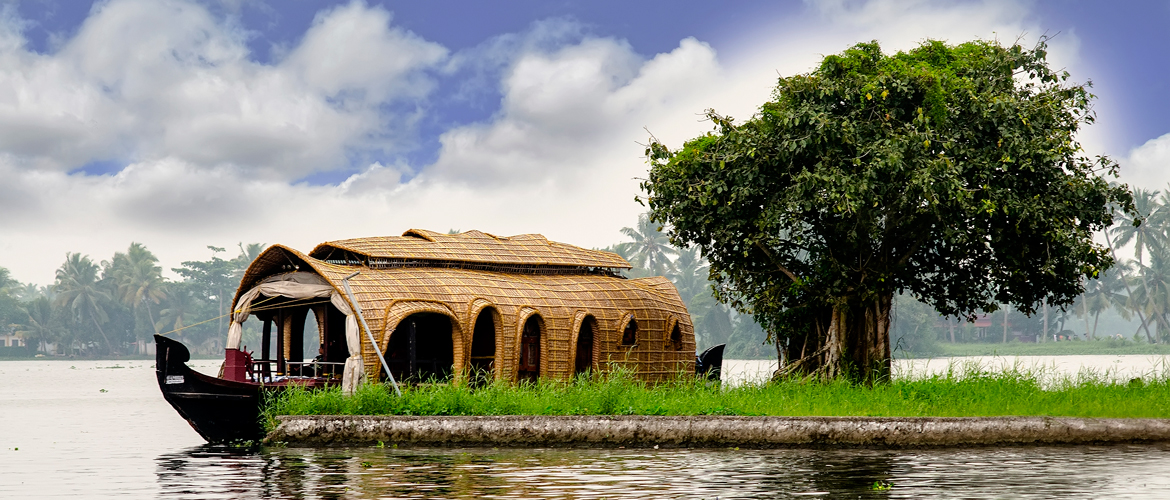
Kerala has officially launched Responsible Tourism Mission and aims at expanding across the state
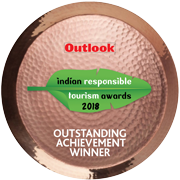
- Inspire Me >
- Kerala: Responsible Tourism Mission
Adding another feather to its cap, Kerala Tourism has just launched Responsible Tourism Mission, to be practiced across the state. According to this new project, all tourism destinations in Kerala will focus on being people-friendly, local community-friendly and environment-friendly. New tourist destinations will be added which will automatically help in the mission's expansion. As of now, the project is being carried out in Kumarakom, Thekkady, Vythiri, Ambalavayal, Kumbalangi, Bakel and Kovalam. The mission aims at ensuring rural development, employment opportunities, women empowerment, public participation in tourism and waste management.


Leave a reply
Related articles.
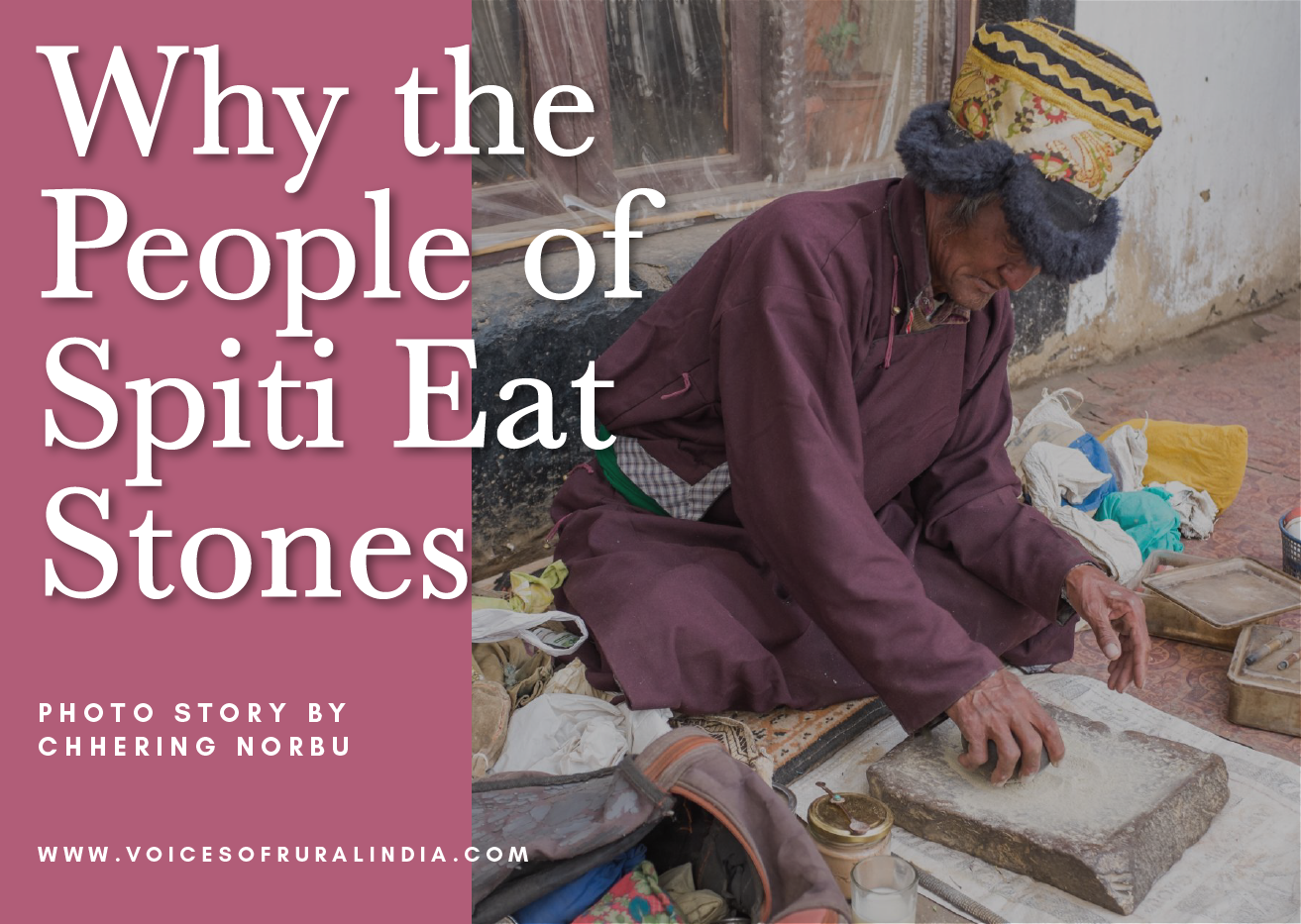
One of the few remaining amchis of Spiti Valley sheds light on the challenges of his practice and the miracle stones still used as a treatment

Witerson M. Sangma, social worker from Meghalaya's Chiringmagre village shares how ancient traditions and tribal culture help preserve a patch of pristine biodiversity in Meghalaya’s South Garo Hills
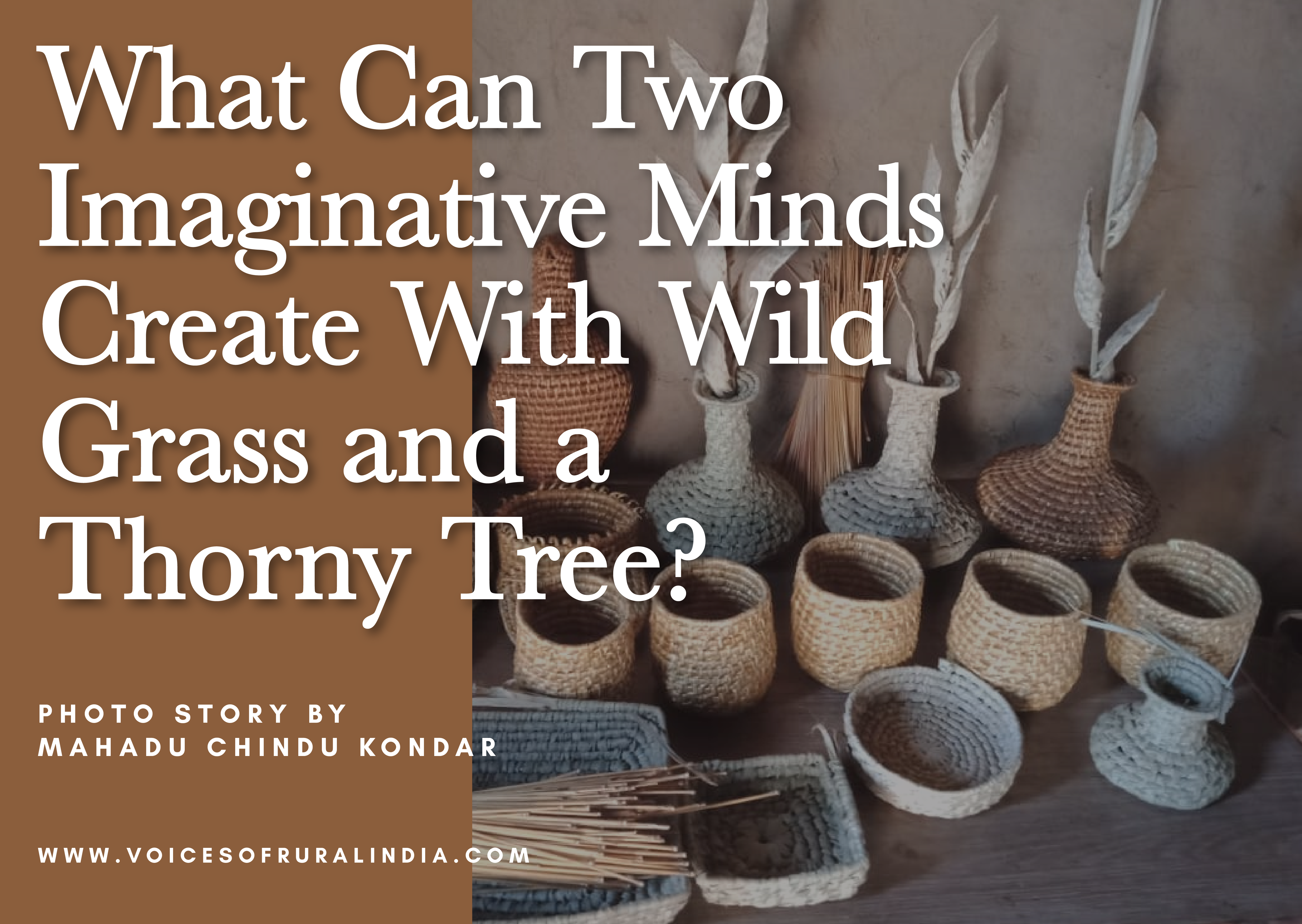
A teacher from Maharashtra's Purushwadi village visually documents the craftsmenship of two brothers, who use wild grass, a thorny tree and their imagination to create sustainable vessels, vases, ornaments and more.
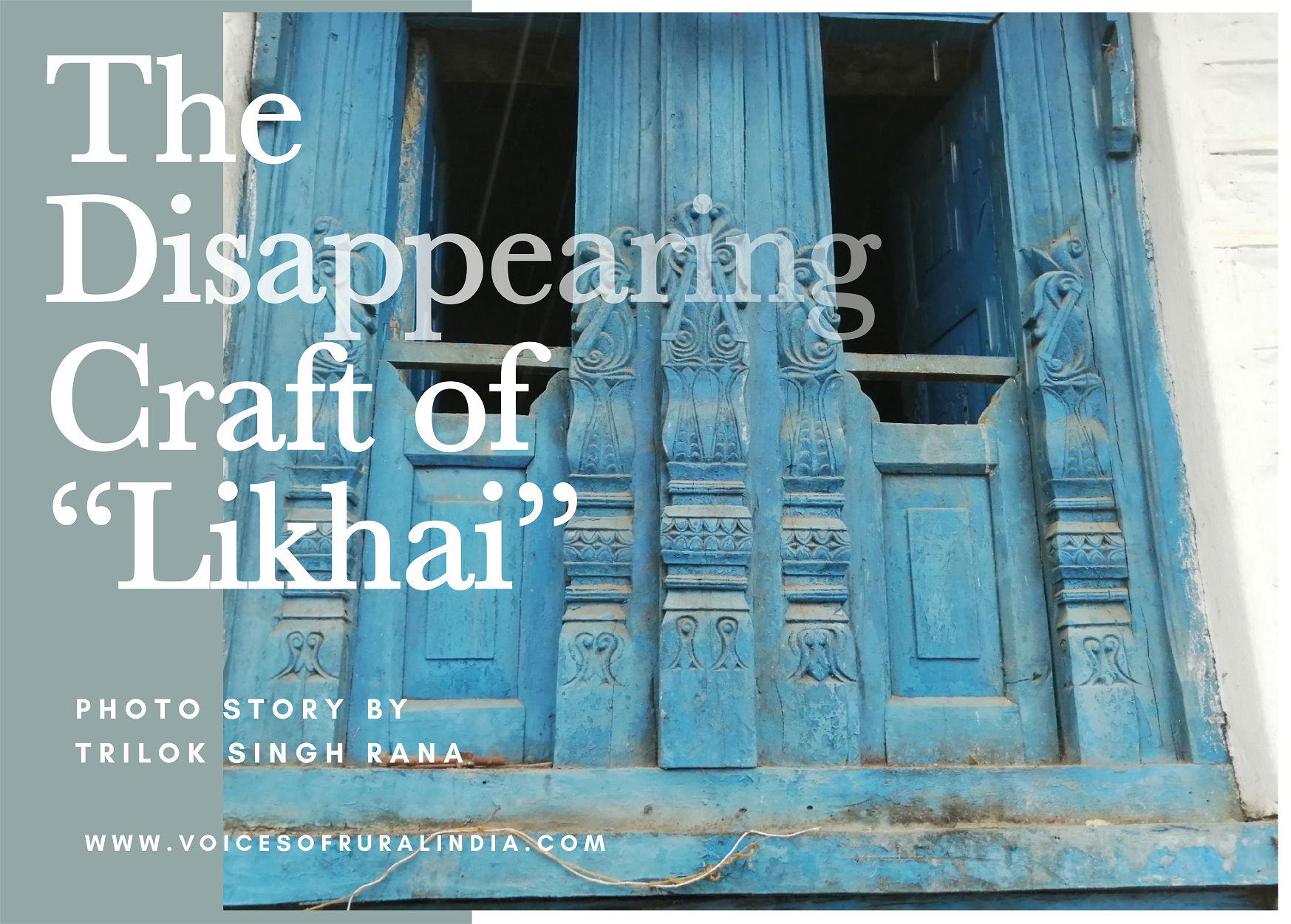
How a Himalayan village reclaimed the lost art of wood carving

Subscribe Now! Get features like

- Latest News
- Entertainment
- Real Estate
- MP Board Result 2024 live
- Crick-it: Catch the game
- Election Schedule 2024
- Win iPhone 15
- IPL 2024 Schedule
- IPL Points Table
- IPL Purple Cap
- IPL Orange Cap
- AP Board Results 2024
- The Interview
- Web Stories
- Virat Kohli
- Mumbai News
- Bengaluru News
- Daily Digest

Kerala honoured with Global Responsible Tourism Award 2023 for promoting sustainable and inclusive tourism
The kerala responsible tourism mission wins the global responsible tourism award 2023 for promoting sustainable and women-inclusive initiatives..
Kerala on Friday bagged the prestigious Global Responsible Tourism Award 2023, for its sustainable and women-inclusive initiatives successfully promoted by the state’s Responsible Tourism Mission. State Tourism Minister P A Mohammed Riyas said the state won the award instituted by the Responsible Tourism Partnership and International Centre for Responsible Tourism (ICRT) in the 'Best for Local Sourcing - Craft and Food' category.

"The State RT Mission was selected for the award, the most valued honour being given for sustainable and inclusive tourism initiatives, for linking women-led small and medium-sized enterprises (SMEs) to tourism activities and ensuring effective marketing of indigenous products," Riyas said in a release. The London-based organisers selected the Kerala Responsible Tourism Mission as a joint winner along with Eswatini, the erstwhile Swaziland, a landlocked country in southern Africa, which is noted for eco-friendly Ngwenya Glass.
Riyas said the international award reflects the universal appeal of responsible tourism projects that Kerala has successfully implemented, thereby establishing a viable model for the rest of India as well as other countries. "The crux of this model is that it helps conserve nature and tangible and intangible heritage, while bringing substantial benefits to local communities," the minister added. He said the Kerala RT Mission has been implementing women-friendly tourism projects in the state with the support of UN Women, the UN organisation dedicated to gender equality and women empowerment.
This is the second time Kerala RTM is getting the Responsible Tourism Global Award, after its Water STREET project implemented in Maravanthuruthu in Kottayam district bagging the honour last year. "The award jury recognised the work of the RTM in promoting the ethnic and traditional foods of each locality through tourism, providing authentic local food experiences enjoyed in local homes for tourists, besides generating additional income for the local communities," the Tourism Department said in a release.
The Global Responsible Tourism Awards, which cater to Africa, India and Latin America regions, were given in six categories including Best for Tackling Plastic Waste; Best for Meaningful Connections; Best for Local Sourcing - Craft and Food; Addressing Climate Change; Best for Diversity and Inclusion and Best for Nature-Positive Tourism.
- Tourist Attraction
Join Hindustan Times
Create free account and unlock exciting features like.

- Terms of use
- Privacy policy
- Weather Today
- HT Newsletters
- Subscription
- Print Ad Rates
- Code of Ethics
- Elections 2024
- DC vs SRH Live Score
- India vs England
- T20 World Cup 2024 Schedule
- IPL 2024 Auctions
- T20 World Cup 2024
- Cricket Teams
- Cricket Players
- ICC Rankings
- Cricket Schedule
- Other Cities
- Income Tax Calculator
- Budget 2024
- Petrol Prices
- Diesel Prices
- Silver Rate
- Relationships
- Art and Culture
- Taylor Swift: A Primer
- Telugu Cinema
- Tamil Cinema
- Exam Results
- Competitive Exams
- Board Exams
- BBA Colleges
- Engineering Colleges
- Medical Colleges
- BCA Colleges
- Medical Exams
- Engineering Exams
- Horoscope 2024
- Festive Calendar 2024
- Compatibility Calculator
- The Economist Articles
- Explainer Video
- On The Record
- Vikram Chandra Daily Wrap
- PBKS vs DC Live Score
- KKR vs SRH Live Score
- EPL 2023-24
- ISL 2023-24
- Asian Games 2023
- Public Health
- Economic Policy
- International Affairs
- Climate Change
- Gender Equality
- future tech
- Daily Sudoku
- Daily Crossword
- Daily Word Jumble
- HT Friday Finance
- Explore Hindustan Times
- Privacy Policy
- Terms of Use
- Subscription - Terms of Use
We have updated our terms and conditions and privacy policy Click "Continue" to accept and continue with ET TravelWorld
We use cookies to ensure best experience for you
We use cookies and other tracking technologies to improve your browsing experience on our site, show personalize content and targeted ads, analyze site traffic, and understand where our audience is coming from. You can also read our privacy policy , We use cookies to ensure the best experience for you on our website.
By choosing I accept, or by continuing being on the website, you consent to our use of Cookies and Terms & Conditions .
- Leaders Speak
- Brand Solutions
- Kerala’s Responsible Tourism Mission makes it to UNWTO list
Kerala's strategy involved leveraging local resources and products to bolster RT destinations, effectively aligning with and contributing to the realization of the SDGs. Kerala's RT Mission stands distinguished among seven G20 nations, alongside Maharashtra, the other Indian state recognised for its Tadoba-Andhari Tiger Reserve project. These two Indian case studies join a select group of seven G20 countries featured on the UNWTO list.
- Online Bureau ,
- ETTravelWorld
- Updated On Nov 22, 2023 at 10:28 AM IST
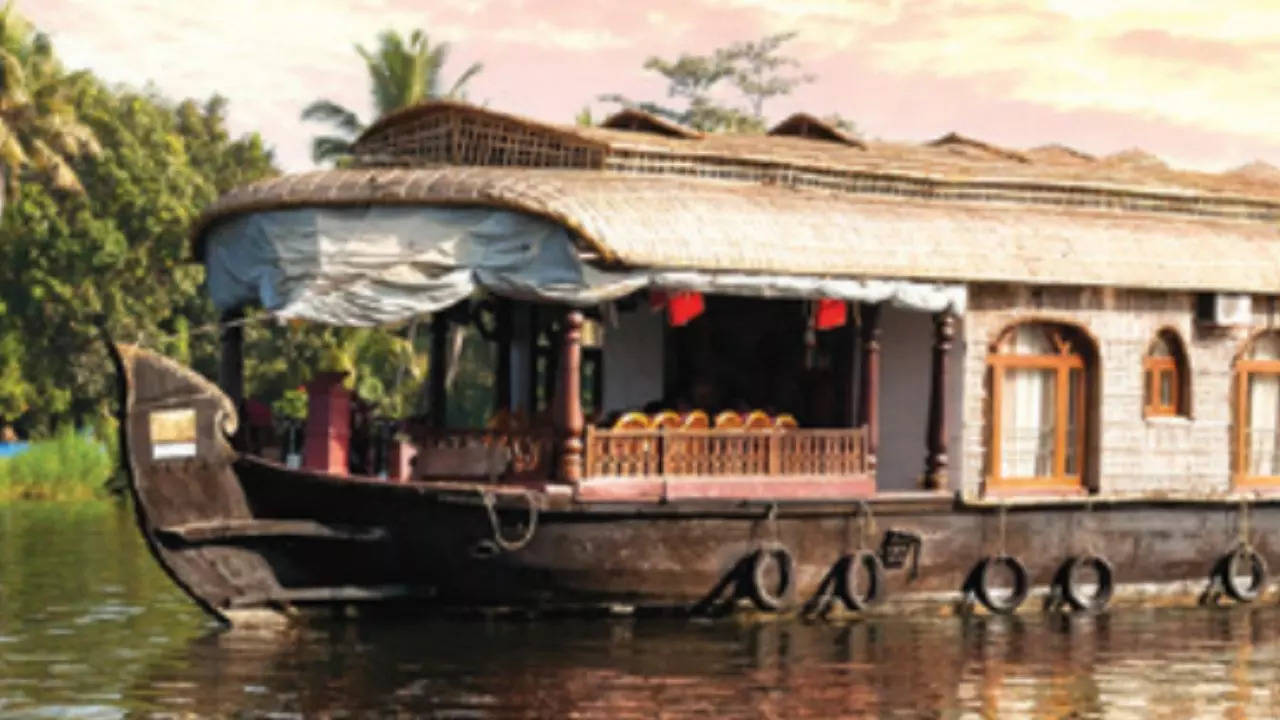
UNWTO launches San Marino Action Agenda for Accessible Tourism for All
This move stems from the recognition that 1.3 billion individuals globally grapple with significant disabilities, necessitating a concerted effort to make tourism universally accessible. Discussions among experts highlighted the untapped potential of this market, emphasising the need to craft tourism experiences under the banner of Universal Design. Debates also underscored the pivotal role of social inclusivity and accessibility in fostering sustainable tourism.
- By Online Bureau ,
- Published On Nov 22, 2023 at 10:11 AM IST
All Comments
By commenting, you agree to the Prohibited Content Policy
Find this Comment Offensive?
- Foul Language
- Inciting hatred against a certain community
- Out of Context / Spam
Join the community of 2M+ industry professionals
Subscribe to our newsletter to get latest insights & analysis., download ettravelworld app.
- Get Realtime updates
- Save your favourite articles
- p.a. mohamed riyas
- state rt mission
- maharashtra
- kerala rt mission
- responsible tourism (rt) mission
- tadoba-andhari tiger reserve

Responsible Tourism Mission

RT Destinations
- Online Platforms
- RT Projects
- E-Books/E-Brochures
- Success Stories
- Kerala Tourism
Objectives of RT Mission
- To Initiate community level tourism activities
- To establish tourism linkage to community level activities
- To encourage tourism trade and other stakeholders to practice RT principles
- To facilitate RT Classification of tourism service providers
- To encourage tourism units and tourists to take up socially relevant activities
- To encourage tourism units and tourists to practice environment-friendly practices
- To build capacity of community at various levels to get benefits from tourism
- To document field level activities, studies, researches etc.
- To create good industry- community relations in tourism sector
- To promote local employment and local procurement
- To promote green principles in construction and architecture, green protocols in waste management, organic farming etc. in tourism destinations
- To promote fair trade in tourism
- To facilitate protection and augmentation of farming through tourism
- To facilitate the empowerment of women and marginalised communities through tourism
- To develop local entrepreneurships in tourism
- To protect and promote art and culture through tourism
- To facilitate training, research, product development and sustainable projects in the tourism sector
- To explore NGO partnership for community-related aspects in the tourism sector
- To organise Responsible Tourism Clubs at Colleges & Schools
- To promote innovation in the economic, social and environmental aspects of tourism to enhance benefits for local community
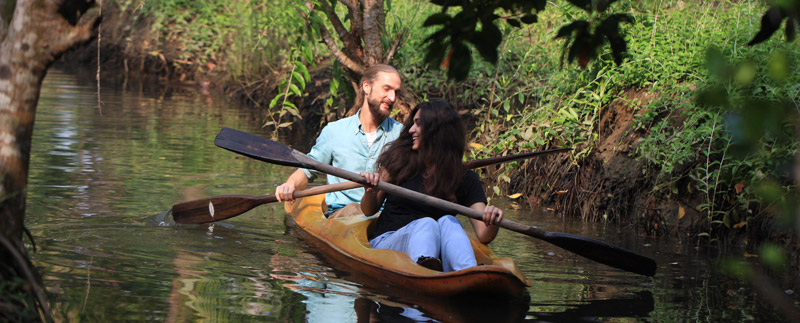

Our Approach
At the Center for Responsible Travel (CREST), we’re passionate about transforming the way the world travels. Our mission is to serve as a center of tourism knowledge, empowerment, and action for destination communities. We envision a world where travel benefits both people and the planet, fostering a sustainable, inclusive, and environmentally responsible future for all.
We understand that irresponsible tourism can exacerbate pressing challenges, such as overtourism, climate change acceleration, inequality and poverty, and the loss of biodiversity and cultural heritage. To tackle these issues, we’ve developed a comprehensive 4-pillar approach:
- Applied Research : We are a dynamic hub for groundbreaking and practical tourism research. We bridge the gap between academia and the private sector, providing practitioners with accessible resources, cutting-edge tourism trends, and tools to more responsibly manage their destinations, community nonprofits, and businesses.
- Destination Stewardship : We champion the cause of responsible tourism by encouraging destinations to prioritize stewardship over mere management and marketing. Our hands-on approach to destination stewardship planning, implementation, and fundraising fosters community participation, sustainable development, and environmental conservation.
- Advocacy & Systems Change : By uniting diverse tourism stakeholders, we strive to transform the industry’s paradigm and promote more responsible practices. We cultivate meaningful dialogue, advocate for progressive regulations, and nurture powerful cross-sector partnerships to drive collective action.
- Education & Events : Lifelong learning is at the heart of our mission. Through speaking forums, events, and our academic affiliates network, we foster knowledge-sharing, capacity-building, and resource development for leaders and community members across the tourism value chain.
With this approach, we are dedicated to helping communities, businesses, and destinations adopt responsible tourism policies and practices. Our strategic collaborations, meticulous research, and community-driven field projects aim to make a lasting, positive impact on the tourism industry.
We invite you to join us on this journey towards a more sustainable, equitable, and environmentally conscious future for travel. Explore our website to learn more about our initiatives, and discover how you can become a part of the movement for responsible tourism.
Together, we can create a world where travel truly benefits communities and the environment.

What is responsible tourism and why does it matter?
Disclaimer: Some posts on Tourism Teacher may contain affiliate links. If you appreciate this content, you can show your support by making a purchase through these links or by buying me a coffee . Thank you for your support!
Responsible tourism is a term we hear thrown about a lot these days, but what does it actually mean to be a responsible tourist? Who needs to be ‘responsible’ and why does responsible tourism matter?
There is no denying the increased recognition amongst tourism industry stakeholders and tourists when it comes to social and corporate responsibility, but the reality is that whilst most of us are familiar with the term ‘responsible tourism’, many of us do not know exactly what this entails…. so in this article I will explain all.
What is responsible tourism?
Responsible tourism definition
What is the difference between responsible tourism and sustainable tourism, the growth of responsible tourism.
Why is responsible tourism important?
How can we be responsible tourists?
How can the tourism industry be more responsible, footsteps ecolodge, the gambia, eden project, cornwall, reality tours and travel, india, dolphin discovery centre, western australia, rancho margot, costa rica, responsible tourism: key takeaways, responsible tourism faqs, responsible tourism: to conclude.

In recent years there has been a clear shift away from the desire to embark on a traditional package holiday , which focusses on the concept of sun, sea and sand towards more experiential travel . Nowadays, many consumers are in search of holidays that provide them with more than two weeks on the beach , and instead are seeking deeper immersive experiences, where there is a greater focus on sustainability. This is coupled with a general trend towards more sustainable living and a greater awareness of the impacts of our actions on society and the natural environment.
In essence, responsible tourism is tourism that exhibits responsible behaviour, both in terms of the tourist and their individual actions, but also in terms of the industry and how the tourism provision is managed. Responsible tourism has become an established area of tourism research and practice and a household term, however the term is somewhat subjective and poorly understood in some contexts.
The definition of responsible tourism, both in theory and practice, has been the subject of debate for many years. The problem lies with the inherent subjectivity surrounding the term responsible- what one person may think is ‘responsible behaviour’, another may not.

Whilst many academics and industry practitioners have attempted to define the term responsible tourism, the most referenced source when it comes to defining the term remains to be the Cape Town Declaration. The 2002 Cape Town Declaration characterises responsible tourism in terms of the following:
- minimising impacts
- generating economic benefits for host communities
- involving local people in decision making
- conserving natural and cultural heritage
- providing meaningful connections between tourists and local people
- being accessible and culturally sensitive
In other words, tourism should encompass aspects of the above in order to be considered ‘responsible’.
Harold Goodwin is one of the key authors who has written about responsible tourism. If you are studying responsible tourism I highly recommend that you cite him in your work! You can find his most recent book here .
Although the term responsible tourism does share much in common with sustainable tourism , ecotourism , ethical tourism and other related forms of socially-conscious tourism, it is NOT the same. This can be quite confusing because oftentimes the terms sustainable tourism and responsible tourism are used interchangeably, but they shouldn’t be.

As I explain in detail in my article on sustainable tourism , there are three pillars to sustainable tourism- the environment, society and the economy. The World Tourism Organisation prescribes that sustainable tourism should:
- Make optimal use of environmental resources that constitute a key element in tourism development, maintaining essential ecological processes and helping to conserve natural heritage and biodiversity.
- Respect the socio-cultural authenticity of host communities, conserve their built and living cultural heritage and traditional values, and contribute to inter-cultural understanding and tolerance.
- Ensure viable, long-term economic operations, providing socio-economic benefits to all stakeholders that are fairly distributed, including stable employment and income-earning opportunities and social services to host communities, and contributing to poverty alleviation.
Whilst there are clear aims of sustainable tourism, when it comes to responsible tourism the definition is a bit more loose, without such transparent prerequisites and instead relying on the premise of simply ‘being responsible’. In other words, responsible tourism will often encompass the elements noted above, but these are not essential.

The concept of responsible tourism may be in the public mind more now than ever before, but it isn’t new. The vision of a more responsible form of tourism was discussed at length back in the 1980s and became an important element within the fast emerging concept of sustainable tourism. More than twenty five years ago it was noted that the industry would have to adopt more environmentally orientated and socially responsible practices, yet this has only really become prominent in the past decade.
According to a study undertaken by Booking.com in 2020, over half (53%) of tourists around the world want to travel more sustainably in the future. The company, along with many other industry professionals-myself included- expects to see a more eco-conscious mindset in future years. Whilst there was a general shift towards a more sustainable mindset anyway, this was amplified by the COVID pandemic, as coronavirus amped people’s awareness of their impact on the environment and local communities.

Nowadays, the label of ‘responsible tourism’ is by far the most well-used sustainability-focussed term throughout the travel and tourism industry. In fact, a study undertaken in 2009 by SNV suggests that tour operators are almost five times as likely to use the term ‘responsible tourism’ than any other similar label (e.g. ecotourism, sustainable tourism, ethical tourism). Sadly, the subjectivity of the term does allow room for the term itself to be used exploited and for greenwashing to occur, but that’s a discussion for another day.
The UNWTO Secretary-General Zurab Pololikashvili stated , quite rightly, that:
‘ Sustainability must no longer be a niche part of tourism but the new norm for every part of our sector. That means an opportunity to build back better and create and industry that is more resilient and aligned with the UN’s Sustainable Development Goals . ‘
The tourism industry is arguably the biggest industry in the world and it has been growing at a rapid rate over the past few decades. Unfortunately, as the industry has grown around the world, so have the negative impacts that it causes. Whilst the pandemic has been a disaster for the tourism industry and those whose livelihoods depend on it, it has also presented us with a unique opportunity to fix what was/is broken.
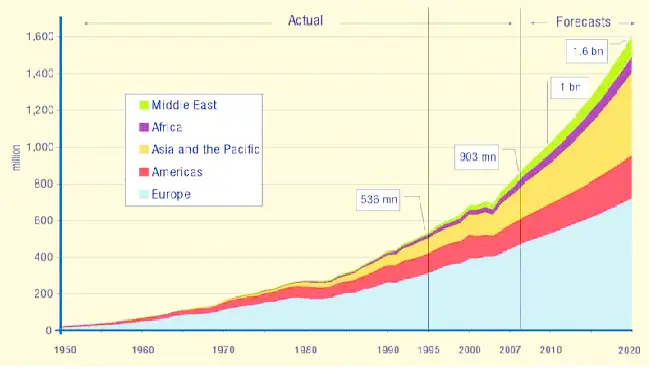
From the depths of the Amazon jungle to the Australian outback, there are few places in the world that have escaped the burgeoning growth of the travel and tourism industry. Unfortunately, in many cases, this has come at the expense of natural resources, local economies and indigenous populations. Responsible tourism is all about minimising these negative impacts (think erosion, littering, rises in crime, deterioration of authenticity , economic leakage and so on) and capitalising on the good stuff- the economic benefits, the preservation of natural areas and the promotion of culture and heritage, amongst other positive impacts of tourism.
Ultimately, if we want to preserve the very things that it is we are going to see (the beach, the mountain, the wildlife etc) for future generations, then we need to behave responsibly and sustainably- that’s why responsible tourism isn’t just important- it’s imperative.

We all need to think about the impacts that our actions have on the world around us. Yes, it is extremely difficult (if possible at all) to be 100% responsible for 100% of the time. BUT, there are many things that we CAN do to help to protect and preserve the environment, society and the economy. You can read a detailed account of how to be an ethical tourist here , but for now I will list a few subtle changes that you can make to help be a more responsible tourist when you travel:
- Don’t buy animal souvenirs
- Avoid unethical wildlife tourism
- Don’t drop litter
- Don’t touch coral
- Try slow tourism
- Opt for eco-friendly transportation options
- Turn off the lights
- Try ecotourism
- Avoid plastic
- Recycle
- Don’t waste water
- Stick to main paths
- Limit economic leakage where you can
- Haggle fairly
- Learn the local language
- Be respectful of local customs and traditions
- Don’t give to beggars
- Treat people fairly
- Avoid sex tourism
- Don’t take photos of people without their permission

A key aspect to ensuring sustainable tourism is achieved is through careful planning and management. Tourism industry stakeholders at all levels, ranging from the taxi driver and hotel staff at grass roots level, through to international organisations and national Government, have an obligation to facilitate responsible tourism. There are many examples of what responsible behaviour from the tourism industry might look like in practice, but here are a few to give you an idea:
- Hire local staff
- Use local products and services to minimise economic leakage
- Use ethical marketing and promotion
- Involve the local community in decision making
- Have a strong sense of corporate social responsibility
- Use environmentally friendly products and services
- Limited economic leakage
- Educate workers
- Offer training and development opportunities for staff
- Work together with other industry stakeholders
Examples of responsible tourism
There are examples of responsible tourism from all over the world! However, to give you an idea of what responsible tourism looks like in practice, I have given a few examples for you below. (Note- these can also be classified as examples of sustainable tourism .)
My first example of sustainable tourism is Footsteps Ecolodge , which I visited back in 2010.
David, the Founder of Footsteps Ecolodge expresses how when he took a relatively cheap trip to The Gambia, he discovered that the staff at his booked hotel were only earning on average £1 per day. David felt guilty for enjoying a holiday knowing that the locals were receiving little or no economic benefits at all from hosting him.
David went on to develop Footsteps Ecolodge, with a mission to improve The Gambia’s trade through responsible tourism and therefore encourages sustainable development. In fact, one of his goals has led footsteps to employ only from the local village and buy only local produce.
I loved visiting this ecolodge. It has many environmentally friendly initiatives, ranging from solar powered electricity to composting toilets. It is based far away from the main tourist areas, providing a unique and authentic holiday experience. After spending a few days in the main tourist resort of Kotu, I was happy to exchange the evening chatter in the restaurants for the humming of grasshoppers and the beach bar music for the gentle sounds of waves.
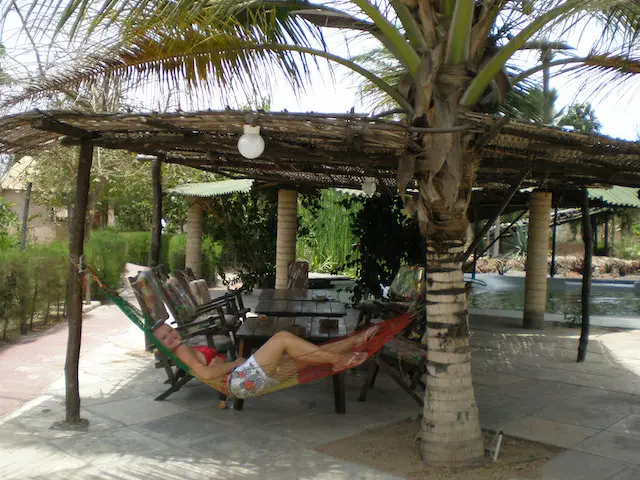
You can book a stay at Footsteps Ecolodge here .
The Eden Project is another great example of sustainable tourism.
It was built to demonstrate the importance of plants to people and to promote the understanding of vital relationships between plants and people. It is a huge complex that welcomes a wide range of tourists from the UK and overseas. In 2017, the project attracted more than o ne million visitors.
The project in fact has annual sustainability reports, monitoring its sustainable impact year on year.
You can find out more about the Eden Project in this video.
Reality Tours and Travel’s mission is to provide authentic and thought-provoking local experiences through their tours and to use the profits to create change in Indian communities.
Reality Tours and Travel is a social catalyst and works towards profit sharing programs. 80% of their profits go directly to Reality Gives which runs high quality education programs in areas where their tours work.
Reality Tours and Travel now welcomes over 15,000 guests each year and employs over 50 members of staff. Here is a bit more information about the work that they do.
The Dolphin Discovery Centre begun when Mrs Evelyn Smith begun to feed a group of dolphins near her home. Following her discovery of the dolphin grouping, specialists were brought in to monitor and study the local dolphins.
A few years later, the Dolphin Discovery Centre allowed tourists and community members to interact with the dolphins in hope they would understand and enjoy the marine mammals.
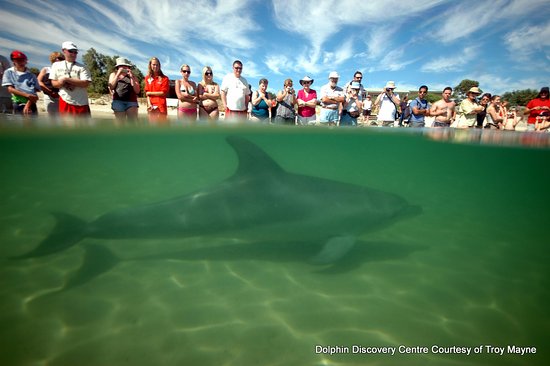
In brief, the Dolphin Discovery Centre Adopt a Dolphin Program supports the conservation of dolphins and the broader marine environment.
To date, the Dolphin Discovery Centre not only conserves dolphins, the centre also conserves turtles too. Learn more on adopting a dolphin or turtle with the Dolphin Discovery Centre here.
Ranch Margot is exactly what it sounds, a ranch located in Costa Rica. It all begun in 2004 when the founder of Rancho Margot, Juan Sostheim, purchased 400 acres of pasture. Despite the land being cleared of all vegetation, Juan Sostheim had a vision to grow sustainable food and raising animals.
Today, Rancho Margot focuses specifically on sustainable production and living, from the food they delivery to their energy production and the transportation used. Read more on Rancho Margot here.
Rancho Margot’s sustainable mission is in keeping with the Brundtland Report.
“To achieve and maintain sustainable operations, we work to find better ways to satisfy our needs without compromising future generations”
Whilst I didn’t get a chance got visit Rancho Margot during our travels through Costa Rica , it does look like a fantastic place to go and a great example of sustainable tourism.
Now that we know a bit more about what responsible tourism is and how it works, lets summarise the key takeaways:
- Responsible tourism involves making ethical and sustainable choices when traveling.
- It is important to respect local cultures, traditions, and customs when visiting a new place.
- Supporting local communities by buying locally-made products and using locally-owned businesses can have a positive impact on the local economy.
- Minimising your carbon footprint by using eco-friendly transportation options and reducing waste can help reduce the impact of tourism on the environment.
- Being mindful of the impact of your visit on the local environment and taking steps to minimise damage, such as not littering or damaging natural habitats, is important.
- Learning about the history and culture of the destination you are visiting can help you appreciate and respect it more.
- Engaging in ethical wildlife tourism , such as visiting sanctuaries and conservation centres, can help support animal welfare and conservation efforts.
- Respecting the privacy and dignity of local people is important when taking photographs or engaging in other tourist activities.
- Supporting responsible tourism organisations and initiatives can help promote sustainable and ethical tourism practices.
- Ultimately, responsible tourism involves making conscious and informed decisions that benefit the destination and its people, while minimising negative impacts on the environment and local communities.
Lastly, lets finish off this article by answering some of the most common questions on this topic.
Responsible tourism is a type of tourism that aims to promote ethical and sustainable practices that benefit local communities and minimise negative impacts on the environment.
Responsible tourism is important because it helps promote sustainable and ethical practices in the tourism industry, which can benefit both the environment and local communities.
How can I engage in responsible tourism?
You can engage in responsible tourism by being mindful of your impact on the environment and local communities, supporting local businesses, and engaging in ethical and sustainable tourism practices.
What are some examples of responsible tourism practices?
Examples of responsible tourism practices include buying locally-made products, using eco-friendly transportation options, supporting wildlife conservation efforts, and respecting local cultures and traditions.
How can tourism negatively impact local communities?
Tourism can negatively impact local communities through overdevelopment, cultural commodification , and economic exploitation.
Can responsible tourism benefit local communities?
Yes, responsible tourism can benefit local communities by supporting local businesses and creating job opportunities.
What is eco-tourism?
Eco-tourism is a type of responsible tourism that focuses on visiting natural areas in a way that is environmentally friendly and supports conservation efforts.
Can responsible tourism help reduce the negative impact of tourism on the environment ?
Yes, responsible tourism can help reduce the negative impact of tourism on the environment by promoting sustainable practices such as reducing waste and using eco-friendly transportation options.
Is responsible tourism more expensive than traditional tourism?
Responsible tourism may not necessarily be more expensive than traditional tourism, as it depends on the specific activities and accommodations chosen.
What is the role of governments and tourism organisations in promoting responsible tourism?
Governments and tourism organisations have a role in promoting responsible tourism by creating policies and guidelines that encourage sustainable and ethical practices , and by educating tourists on responsible tourism practices.
As you can see, responsible tourism is very important to ensure that the tourism industry is sustainable. To learn more about this, visit the articles listed below:
- Ethical tourism: Everything you need to know
- Agritourism: What, where and why
- The rise of revenge tourism
- Educational tourism: Everything you need to know
Liked this article? Click to share!
UN Tourism | Bringing the world closer
Share this content.
- Share this article on facebook
- Share this article on twitter
- Share this article on linkedin

COMMITTEE FOR TOURISM - MOSCOW CITY GOVERNMENT
Country: Russian Federation
Website: https://www.mos.ru/tourism/
Tourism Web Portal
About the portal.
A technological tool for effective communication between the leading players in the Moscow tourism market and representatives of the foreign/regional tourism industry through online events. OBJECTIVES: • Building long-term cooperation with foreign/regional representatives • Raising awareness among foreign/regional representatives of the tourism industry of the tourism opportunities, measures and attractiveness of the city of Moscow in the field of tourist infrastructure development
Moscow City Tourism Committee
The Tourism Committee, or Mostourism, is the executive body of the Moscow City Government that oversees tourist activities in the capital. The Committee is responsible for legislative initiatives, congress and exhibition activities, and event and image projects. As the brand manager for an attractive tourism image for Moscow, Mostourism constantly analyses global trends, offers Russian and foreign tourists what they want, and also uncovers new opportunities for the capital in terms of interesting and rewarding leisure activities.
ANO «Project Office for the Development of Tourism and Hospitality of Moscow»
Syundyukova Yulia [email protected] Mezhiev Magomed [email protected]
Video materials about Moscow
Take advantage of the search to browse through the World Heritage Centre information.
Share on social media
Unesco social media, kremlin and red square, moscow.
- Description
Inextricably linked to all the most important historical and political events in Russia since the 13th century, the Kremlin (built between the 14th and 17th centuries by outstanding Russian and foreign architects) was the residence of the Great Prince and also a religious centre. At the foot of its ramparts, on Red Square, St Basil's Basilica is one of the most beautiful Russian Orthodox monuments.
Description is available under license CC-BY-SA IGO 3.0
Le Kremlin et la place Rouge, Moscou
Indissolublement lié à tous les événements historiques et politiques les plus importants survenus en Russie depuis le XIII e siècle, le Kremlin a été construit entre le XIV e et le XVII e siècle par des architectes russes et étrangers exceptionnels. C'était la résidence du grand-prince ainsi qu'un centre religieux. Au pied de ses remparts, sur la place Rouge, s'élève la basilique Basile-le-Bienheureux, l'un des plus beaux monuments de l'art orthodoxe.
الكرملين والساحة الحمراء، موسكو
يرتبط الكرملين ارتباطاً وثيقاً بجميع الأحداث التاريخيّة والسياسيّة المهمّة التي توالت على روسيا منذ القرن الثالث عشر ولقد جرى تشييده بين القرنين الرابع والسابع عشر على يد مهندسين روس وأجانب استثنائيين. وكان الكرملين مقرّ الأمير الكبير كما كان مركزاً دينيّاً. عند أسفل أسواره في الساحة الحمراء شيدت بازيليك القديس بازيل وهي من أروع تحف الفنّ الأرثوذكسي.
source: UNESCO/CPE Description is available under license CC-BY-SA IGO 3.0
莫斯科克里姆林宫和红场
由俄罗斯和外国建筑家于14世纪至17世纪共同修建的克里姆林宫,作为沙皇的住宅和宗教中心,与13世纪以来俄罗斯所有最重要的历史事件和政治事件密不可分。在红场上防御城墙的脚下坐落的圣瓦西里教堂是俄罗斯传统艺术最漂亮的代表作之一。
El kremlin y la Plaza Roja de Moscú
Indisolublemente vinculado a los más trascendentales acontecimientos históricos y políticos de Rusia desde el siglo XIII, el kremlin de Moscú fue construido entre los siglos XIV y XVII por toda una serie de excelentes arquitectos rusos y extranjeros. Además de ser la residencia del Gran Príncipe, fue un importante centro religioso. Al pie de sus murallas, en la Plaza Roja, se alza la basílica de San Basilio el Bienaventurado, uno de los más hermosos monumentos de arte ortodoxo.
モスクワのクレムリンと赤の広場
source: NFUAJ
Kremlin en Rode Plein, Moskou
Het Kremlin is onlosmakelijk verbonden met alle belangrijke historische en politieke gebeurtenissen in Rusland sinds de 13e eeuw. Het werd door de Grote Prins Yuri van Kiev gesticht als residentie en religieus centrum. De bouw vond plaats tussen de 14e en 17e eeuw en het ontwerp was in handen van uitstekende Russische en buitenlandse architecten. Binnen de muren van het Kremlin vindt men een reeks meesterwerken qua architectuur, maar ook beeldende kunst en religieuze monumenten van uitzonderlijke schoonheid. Aan de voet van de stadsmuren, op het Rode Plein, bevindt zich een van de mooiste Russisch-orthodoxe monumenten, de Pokrovkathedraal ook wel Basiliuskathedraal genoemd.
Source: unesco.nl

Outstanding Universal Value
Brief synthesis
At the geographic and historic centre of Moscow, the Moscow Kremlin is the oldest part of the city. First mentioned in the Hypatian Chronicle in 1147 as a fortification erected on the left bank of the Moskva river by Yuri Dolgoruki, Prince of Suzdal, the Kremlin developed and grew with settlements and suburbs which were further surrounded by new fortifications - Kitaigorodsky Wall, Bely Gorod, Zemlyanoy Gorod and others. This determined a radial and circular plan of the centre of Moscow typical of many other Old Russian cities.
In 13th century the Kremlin was the official residence of supreme power - the center of temporal and spiritual life of the state. The Kremlin of the late 15th – early 16th century is one of the major fortifications of Europe (the stone walls and towers of present day were erected in 1485–1516). It contains an ensemble of monuments of outstanding quality.
The most significant churches of the Moscow Kremlin are situated on the Cathedral Square; they are the Cathedral of the Dormition, Church of the Archangel, Church of the Annunciation and the bell tower of Ivan Veliki. Almost all of them were designed by invited Italian architects which is clearly seen in their architectural style. The five-domed Assumption Cathedral (1475–1479) was built by an Italian architect Aristotele Fiorvanti. Its interior is decorated with frescos and a five-tier iconostasis (15th–17th century). The cathedral became the major Russian Orthodox church; a wedding and coronation place for great princes, tsars and emperors as well as the shrine for metropolitans and patriarchs.
In the same square another Italian architect, Alevisio Novi, erected the five-domed Church of the Archangel in 1505-1508. From the 17th to 19th century, its interior was decorated by wonderful frescos and an iconostasis. In this church many great princes and tsars of Moscow are buried. Among them are Ivan I Kalita, Dmitri Donskoi, Ivan III, Ivan IV the Terrible, Mikhail Fedorovich and Alexei Mikhailovich Romanovs.
The Cathedral of the Dormition was built by Pskov architects in 1484–1489. Inside the cathedral some mural paintings of 16th–19th century have been preserved and the icons of Andrei Rublev and Theophanes the Greek are part of the iconostasis.
In 1505-1508 the bell tower of Ivan Veliki was built. Being 82 metres high it was the highest building in Russia which became the focal point of the Kremlin ensemble.
Among the oldest civil buildings of the Moscow Kremlin, the Palace of the Facets (1487–1491) is the most remarkable. Italian architects Marco Fryazin and Pietro Antonio Solario built it as a great hall for holding state ceremonies, celebrations and for receiving foreign ambassadors. The most noteworthy civil construction of the 17th century built by Russian masters is the Teremnoi Palace.
From the early 18th century, when the capital of Russia moved to St. Petersburg, the Kremlin mainly played a ceremonial role with religious functions. By the end of the century the architectural complex of the Kremlin expanded with the Arsenal reconstructed after the Fire of 1797 by Matvei Kazakov. The Senate was built in 1776–1787 according to the plans of the same architect as the home of the highest agency of State power of the Russian Empire - the Ruling Senate. Today it is the residence of the President of Russia.
From 1839 to 1849 a Russian architect K.A. Thon erected the Great Kremlin Palace as a residence of the imperial family which combined ancient Kremlin buildings such as the Palace of the Facets, the Tsarina’s Golden Chamber, Master Chambers, the Teremnoi Palace and the Teremnoi churches. In the Armory Chamber built by K.A. Thon within the complex of the Great Kremlin Palace, there is a 16th century museum officially established by the order of Alexander I in 1806.
Red Square, closely associated with the Kremlin, lies beneath its east wall. At its south end is the famous Pokrovski Cathedral (Cathedral of St Basil the Blessed), one of the most beautiful monuments of Old Russian church architecture, erected in 1555–1560 to commemorate the victory of Ivan the Terrible over the Kazan Khanate. In the 17th century the cathedral gained its up-to-date appearance thanks to the decorative finishing of the domes and painting both inside and outside the cathedral. The construction of Red Square was finished by the late 19th century together with the erection of the Imperial Historic Museum (today the State Historical Museum), the Upper Trading Rows (GUM) and the Middle Trading Rows. In 1929, , Lenin’s Mausoleum, designed by A.V. Shchusev and an outstanding example of the Soviet monumental architecture, was finished.
Criterion (i) : The Kremlin contains within its walls a unique series of masterpieces of architecture and the plastic arts. There are religious monuments of exceptional beauty such as the Church of the Annunciation, the Cathedral of the Dormition, the Church of the Archangel and the bell tower of Ivan Veliki; there are palaces such as the Great Palace of the Kremlin, which comprises within its walls the Church of the Nativity of the Virgin and the Teremnoi Palace. On Red Square is Saint Basil the Blessed, still a major edifice of Russian Orthodox art.
Criterion (ii) : Throughout its history, Russian architecture has clearly been affected many times by influences emanating from the Kremlin. A particular example was the Italian Renaissance. The influence of the style was clearly felt when Rudolfo Aristotele Fioravanti built the Cathedral of the Dormition (1475-79) and grew stronger with the construction of the Granovitaya Palace (Hall of the Facets, 1487-91) by Marco Fryazin and Pietro Antonio Solario. Italian Renaissance also influenced the towers of the fortified enceinte, built during the same period by Solario, using principles established by Milanese engineers (the Nikolskaya and the Spasskaya Towers both date from 1491). The Renaissance expression was even more present in the classic capitals and shells of the Church of the Archangel, reconstructed from 1505 to 1509 by Alevisio Novi.
Criterion (iv) : With its triangular enceinte pierced by four gates and reinforced with 20 towers, the Moscow Kremlin preserves the memory of the wooden fortifications erected by Yuri Dolgoruki around 1156 on the hill at the confluence of the Moskova and Neglinnaya rivers (the Alexander Garden now covers the latter). By its layout and its history of transformations (in the 14th century Dimitri Donskoi had an enceinte of logs built, then the first stone wall), the Moscow Kremlin is the prototype of a Kremlin - the citadel at the centre of Old Russian towns such as Pskov, Tula, Kazan or Smolensk.
Criterion (vi) : From the 13th century to the founding of St Petersburg, the Moscow Kremlin was directly and tangibly associated with every major event in Russian history. A 200-year period of obscurity ended in 1918 when it became the seat of government again. The Mausoleum of Lenin on Red Square is the Soviet Union’s prime example of symbolic monumental architecture. To proclaim the universal significance of the Russian revolution, the funerary urns of heroes of the revolution were incorporated into the Kremlin’s walls between the Nikolskaya and Spasskaya towers. The site thus combines in an exceptional manner the preserved vestiges of bygone days with present-day signs of one of the greatest events in modern history.
From the date of including the Moscow Kremlin and Red Square on the World Heritage List all the components representing the Outstanding Universal Value of the property are within its boundaries. The territory and the integrity of the World Heritage property have also remained unchanged. Within its boundaries the property still comprises all the elements that it contained at the date of nomination. The biggest threat, however, is unregulated commercial development of the adjacent areas.
Authenticity
The history of the Moscow Kremlin and Red Square is reflected in the archival documents of 12th–19th century, for example in medieval chronicles, cadastral surveys, estimated construction books, painted lists, inventories, foreign notes and in graphic matters such as manuscripts, chronicles, plans, drafts, engravings, lithographs, sketches of foreign travelers, paintings and photographs. These documents are exceptionally valuable information sources. Comparison of the data received from archival documents and those obtained in the process of field study gives the idea of authenticity of the property and its different elements. This comparison also serves as the basis for project development and for the choice of the appropriate methods of restoration that may preserve the monuments’ authenticity.
On the border of the ensemble a number of monuments destroyed in the 1930s were reconstructed according to measured plans.
Protection and management requirements
The statutory and institutional framework of an effective protection, management and improvement of the World Heritage property “Kremlin and Red Square, Moscow” has been established by laws and regulations of the Russian Federation and the city of Moscow.
According to the decree of the President of RSFSR of 18 December 1991 № 294, the Moscow Kremlin was included among especially protected cultural properties of nations of Russia - the highest conservation status for cultural and historical monuments in Russian legislation.
“Kremlin and Red Square, Moscow” is a Cultural Heritage Site of federal importance. State protection and management of federal sites is provided by Federal Law of 25.06.2002 № 73-FZ “On cultural heritage sites (historical and cultural monuments) of nations of the Russian Federation”. The federal executive body responsible for protection of the cultural property is the Department for Control, Supervision and Licensing in the Cultural Heritage Sphere of the Ministry of Culture of the Russian Federation.It is in charge of all methodological and control functions concerning restoration, usage and support of cultural heritage sites and the territories connected.
The World Heritage property is situated in the urban environment of Moscow. The city policy regarding cultural heritage protection and town-planning regulation is the responsibility of Moscow City Government, represented by the Department of Cultural Heritage, the Department of Urban Development and the Committee for Urban Development and Architecture of Moscow. In 1997 the boundaries of the protective (buffer) zone were approved in order to preserve the property, and to maintain and restore the historical architectural environment as well as the integral visual perception of the property.. There is a need to ensure the creation of an appropriate buffer zone and to develop close liaison between all stakeholders, including the Moscow City authorities, to ensure that constructions around the property do not impact adversely on its Outstanding Universal Value.
The World Heritage property is used by the following organizations: FGBUK (Federal Government Budgetary Institution of Culture), the State Historical and Cultural Museum-preserve “The Moscow Kremlin”, the Administrative Department of the President of the Russian Federation, the Federal Guard Service of the Russian Federation and OJSC “GUM Department Store”.
- Official site of 'The Moscow Kremlin' State Historical and Cultural Museum and Heritage Site
- Moscow Kremlin Museums Telegram Group (in Russian only)
- Moscow Kremlin Museums VKontakte Page (in Russian only)
- Moscow Kremlin Museums Dzen Page (in Russian only)
- State Historical Museum VKontakte Group (in Russian only)
- Msk Guide Page (in Russian only)
- Official site of the State Department Store
- State Historical Museum (in Russian only)

State of Conservation (SOC)

Mission Moscow : A Conversation with Evgeny Kozlov
Mr. Evgeny Kozlov, Deputy Head Mayor of Moscow Government and Chairman of the Moscow City Tourism Committee, who has come to the city to attain BLTM, the annual prestigious travel event at the Leela Ambience Convention Centre, Delhi spoke with TW Editor Anirban Dasgupta on his vision and goal with the all-new tourism initiatives in Moscow.
The bond between India and Russia has a long history of culture, literature, love, and of course politics. But recently, there has also been a lot of talk about Gastronomical tourism. Any personal experience with this?
My personal take on the bond between India and Russia stems from my recent experience of trying authentic Indian cuisine in Moscow. I thoroughly enjoyed the spicy flavours of the Curry dish I tried and it left a lasting impression on me. This made me appreciate the cultural exchange between our two countries even more. I believe that Moscow, being a culinary hub, is a great place for people from all over the world, including Indian visitors, to immerse themselves in our rich history and culture. It’s a unique experience that brings people together and showcases the diversity of the gastronomic universe. Moscow has a thriving food scene with various international cuisines to explore, from Chinese to South African and Latin American. This culinary diversity reflects the open-mindedness and curiosity of the Russian people when it comes to trying new types of food. Moscow truly has something for everyone, and I encourage Indian tourists to come and indulge in this gastronomic journey.

How optimistic are the post-pandemic recovery figures?
After the Covid-19 pandemic, we have witnessed a remarkable recovery in tourism in Moscow. In fact, we have been able to restore 90% of the pre-pandemic tourist flow. In the first half of 2023, almost a million foreign tourists visited Moscow, with over 600,000 of them arriving during the summer season. Among the non-CIS countries, China has led the way in terms of tourist traffic, followed by Iran, the United Arab Emirates, Turkey, and India. Prior to the pandemic, India’s tourist flow was steadily growing at a rate of 12-15% annually. Although we faced challenges during the pandemic, we have now put in place all the necessary conditions for a successful recovery. Moscow is known for hosting numerous international exhibitions, forums, congresses, and conferences, attracting approximately 3.6 million business visitors in the past year alone. Among these visitors, India ranks third in terms of foreign business tourists in Moscow. To further promote tourism, we have initiated the MICE Ambassadors training program in India, which aims to assist Indian businesses in exploring opportunities and selecting relevant events in Moscow.
Can you please share your vision for future tourism development in Moscow?
Thank you for asking this question. I have a multi-faceted vision for the future tourism development in Moscow.
Firstly, I believe that tourism should provide a personal and authentic experience for each individual. Therefore, customization of experiences is crucial. For business tourists, we aim to offer special infrastructure facilities that cater to their specific needs and requirements. We are closely collaborating with infrastructure providers to ensure seamless experiences for those visiting Moscow for business purposes. On the other hand, when it comes to leisure or family tourists, we recognize the importance of providing a support system and guidelines for those traveling with their families, especially children. We are working with museums, theatres, and restaurants to customize their services and products to cater to tourists of all ages, including children. Furthermore, I envision rearranging tourism in Moscow to encourage visitors to delve into the history and heritage of our country. A significant part of my tourism goal is to motivate and inspire the youth and younger generations to travel to Russia. This involves providing affordable pricing for accommodations, entertainment, museums, and other attractions.
We are already constructing tailor-made infrastructure that specifically targets the young generation in Russia, and by next year, we plan to extend and promote these offerings to international young visitors as well. By rebranding the image of Moscow as a destination for longer stays, relaxation, and enjoying various facilities, we aim to change the perception that it is merely a transit or stop-over city. Lastly, the beautiful weather in Moscow during the summer months provides an opportunity to create delightful memories for tourists. I want every visitor to experience the sunshine, green landscapes, parks, cafes, restaurants, swimming pools, and sports facilities that Moscow has to offer during this time.
In summary, my vision for the future of tourism in Moscow revolves around creating customized travel experiences for every type of traveller.
How do you prioritize sustainability and responsible tourism practices in the development of business tourism?

How easy or difficult is it to get a Visa for an Indian Tourist at present?
Acquiring a Visa for Indian tourists has become easier with the introduction of the e-visa system. Since its launch in August 2023, more than 30,000 tourists have already utilized this system. The e-visa offers several advantages over traditional visas, such as avoiding the need to visit consulates or embassies. The application process only requires a digital photograph and a scan of the passport data page. The e-visa has a validity period of 60 days from the date of issuance, with a maximum stay of 16 days in Russia. This convenient and streamlined process is available to citizens of 55 countries, including India. Indian tourists are currently ranked third in terms of business travellers from outside the CIS countries visiting Moscow.
Author: Anirban
Share article, related news.

BLTM 2023 showcases top destinations for Bleisure and MICE Travel

École Ducasse Abu Dhabi Studio, in partnership with Erth Hospitality, to open this December
No comment be the first one., leave a reply cancel reply.
Your email address will not be published. Required fields are marked *
Save my name, email, and website in this browser for the next time I comment.
We’re sorry, this site is currently experiencing technical difficulties. Please try again in a few moments. Exception: request blocked

IMAGES
VIDEO
COMMENTS
Responsible Tourism (RT) Mission is the nodal agency formed by the Government of Kerala to spread and implement the ideologies and initiatives of Responsible Tourism all over the State. It was launched on 20th October 2017 by Mr. Pinarayi Vijayan, Chief Minister of Kerala.
25 Nov 2023, 1:20 am. 3 min read. Kerala's renowned Responsible Tourism (RT) Mission has achieved global recognition, earning a coveted spot on the prestigious list of case studies by the United Nations World Tourism Organization (UNWTO). This acclaim underscores Kerala's innovative approach to grassroots development and commitment to aligning ...
Kerala's renowned Responsible Tourism (RT) Mission has garnered international acclaim by securing a coveted position on the United Nations World Tourism Organisation's (UNWTO) prestigious list of ...
STREET is a participatory tourism development project by the Responsible Tourism Mission. The project will be implemented in 10 selected places of Kerala based on the UNWTO's new tourism motto, 'Tourism for Inclusive Growth'. Developing/rebranding destinations into theme-based streets and widening the area of tourism activities so as to reduce ...
Aimed at the development of local communities and growth of tourism in the State, Mr. Pinarayi Vijayan, Chief Minister of Kerala launched the Responsible Tourism Mission on 20th October 2017. Making tourism a tool for the development of village and local communities, eradicating poverty and giving emphasis to women empowerment are the main aims ...
The Responsible Tourism Mission will be the implementing agency for the MoU. Women-friendly tourism will be promoted by creating modules and capacity-building of relevant stakeholders, besides providing advisory support for baseline research, implementing women-friendly tourist destinations and supporting interventions to change prevalent ...
Kerala: Responsible Tourism Mission. Adding another feather to its cap, Kerala Tourism has just launched Responsible Tourism Mission, to be practiced across the state. According to this new project, all tourism destinations in Kerala will focus on being people-friendly, local community-friendly and environment-friendly. New tourist destinations ...
Nov 04, 2023 02:57 PM IST. Read this news in brief form. The Kerala Responsible Tourism Mission wins the Global Responsible Tourism Award 2023 for promoting sustainable and women-inclusive ...
Kerala Tourism Director PB Nooh, while recalling the state's hosting of the first-ever Responsible Tourism Global Summit at Kumarakom in February this year, said that the UNWTO Citation had strengthened the presence of 'God's Own Country' on the world tourism map. Additionally, the UNWTO citation comes close on the heels of the Kerala RT Mission getting the Global Award, acknowledging ...
In 2008, the Responsible Tourism initiative was implemented on a pilot basis in four destinations across the State, covering diverse geographical regions namely; Kovalam (beach), Kumarakom (Backwaters), Thekkady (Wildlife) and Wayanad (Hill station). The action plan for practising RT was developed in a participatory framework and implemented ...
The Hindu Bureau. The Responsible Tourism (RT) Mission under Kerala Tourism has made it to the Global List of Case Studies of the United Nations World Tourism Organisation (UNWTO). The UNWTO cited ...
To create good industry- community relations in tourism sector. To promote local employment and local procurement. To promote green principles in construction and architecture, green protocols in waste management, organic farming etc. in tourism destinations. To promote fair trade in tourism. To facilitate protection and augmentation of farming ...
Our Approach. At the Center for Responsible Travel (CREST), we're passionate about transforming the way the world travels. Our mission is to serve as a center of tourism knowledge, empowerment, and action for destination communities. We envision a world where travel benefits both people and the planet, fostering a sustainable, inclusive, and ...
Kerala's Responsible Tourism (RT) Mission has won four gold medals at this year's International Centre for Responsible Tourism (ICRT) Indian Sub-Continent Awards instituted jointly by the ...
The formation of the Responsible Tourism Mission to encourage RT principles and practices has led to the emergence of Kerala as a leading world RT destination. A look into the key initiatives as ...
Responsible tourism is all about minimising these negative impacts (think erosion, littering, rises in crime, deterioration of authenticity, economic leakage and so on) and capitalising on the good stuff- the economic benefits, the preservation of natural areas and the promotion of culture and heritage, amongst other positive impacts of tourism.
The Responsible Tourism Mission's Kerala itineraries include learning coconut-leaf weaving, traditionally used to cover roofs. Courtesy of Kerala Responsible Tourism Kerala Responsible Tourism ...
World Committee on Tourism Ethics; Ethics Convention; Accessibility; Tourism and Culture; Women's Empowerment and Tourism; COVID-19: Sociocultural Impact; Technical Cooperation. Silk Road; UN Tourism Academy. Courses, Webinars & Resources; UN Tourism Executive Education; UN Tourism.QUEST; UN Tourism.TedQual; UN Tourism.TFDP; UN Tourism ...
The Tourism Committee, or Mostourism, is the executive body of the Moscow City Government that oversees tourist activities in the capital. The Committee is responsible for legislative initiatives, congress and exhibition activities, and event and image projects. As the brand manager for an attractive tourism image for Moscow, Mostourism ...
World Heritage partnerships for conservation. Ensuring that World Heritage sites sustain their outstanding universal value is an increasingly challenging mission in today's complex world, where sites are vulnerable to the effects of uncontrolled urban development, unsustainable tourism practices, neglect, natural calamities, pollution, political instability, and conflict.
Mr. Evgeny Kozlov, Deputy Head Mayor of Moscow Government and Chairman of the Moscow City Tourism Committee, who has come to the city to attain BLTM, the annual prestigious travel event at the Leela Ambience Convention Centre, Delhi spoke with TW Editor Anirban Dasgupta on his vision and goal with the all-new tourism initiatives in Moscow. The bond between India and Russia has a long history ...
Duties: Serves as one of three (3) Welders in Facilities Maintenance Section (FAC) responsible for all Metal fabrication works and welding repairs, maintenance and installation equipment and structures in government owned office building or leased properties. Download: Detailed Position Description | PD-WELDER. Qualifications and Evaluations